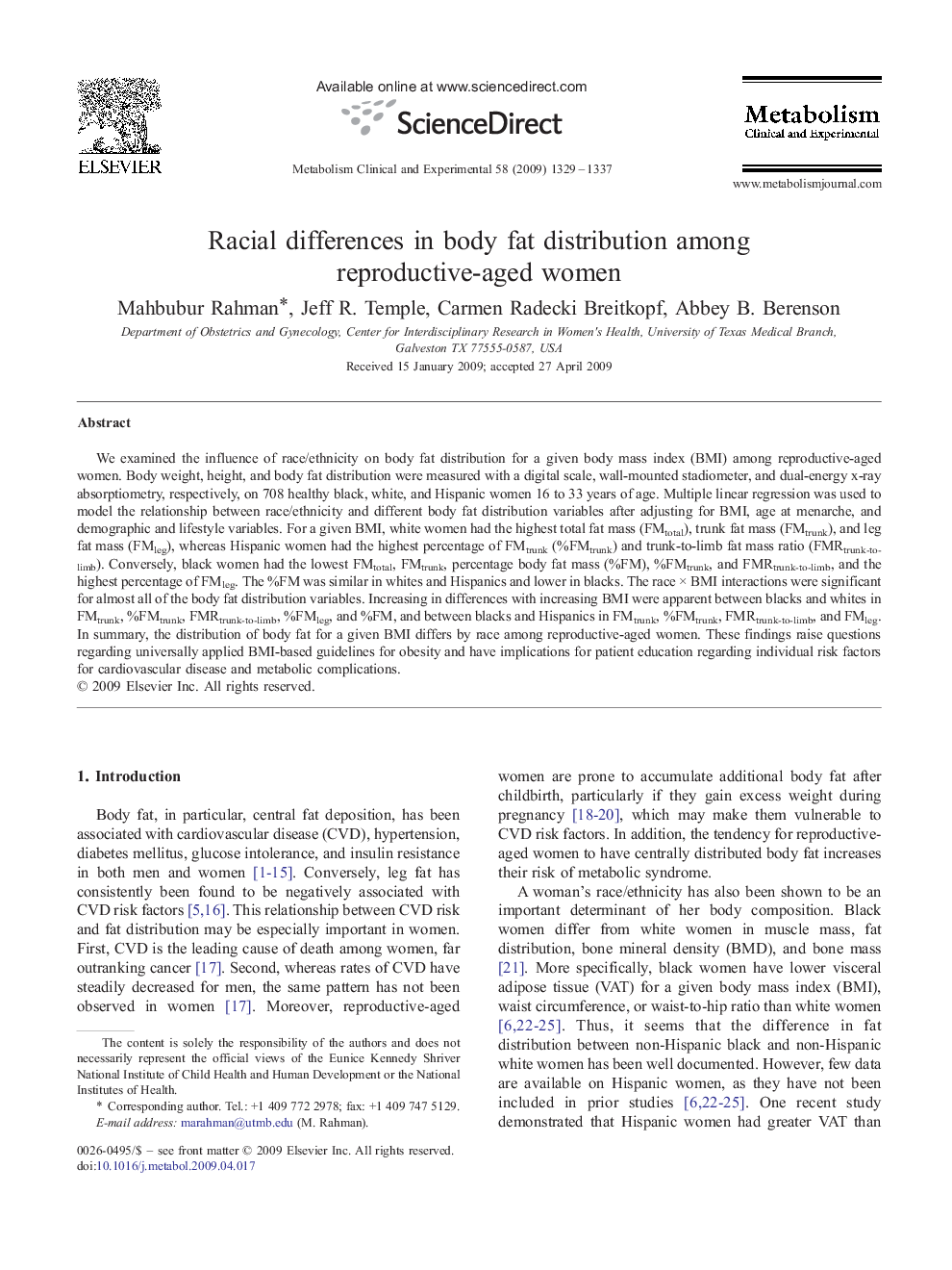| Article ID | Journal | Published Year | Pages | File Type |
|---|---|---|---|---|
| 5903979 | Metabolism | 2009 | 9 Pages |
Abstract
We examined the influence of race/ethnicity on body fat distribution for a given body mass index (BMI) among reproductive-aged women. Body weight, height, and body fat distribution were measured with a digital scale, wall-mounted stadiometer, and dual-energy x-ray absorptiometry, respectively, on 708 healthy black, white, and Hispanic women 16 to 33 years of age. Multiple linear regression was used to model the relationship between race/ethnicity and different body fat distribution variables after adjusting for BMI, age at menarche, and demographic and lifestyle variables. For a given BMI, white women had the highest total fat mass (FMtotal), trunk fat mass (FMtrunk), and leg fat mass (FMleg), whereas Hispanic women had the highest percentage of FMtrunk (%FMtrunk) and trunk-to-limb fat mass ratio (FMRtrunk-to-limb). Conversely, black women had the lowest FMtotal, FMtrunk, percentage body fat mass (%FM), %FMtrunk, and FMRtrunk-to-limb, and the highest percentage of FMleg. The %FM was similar in whites and Hispanics and lower in blacks. The race à BMI interactions were significant for almost all of the body fat distribution variables. Increasing in differences with increasing BMI were apparent between blacks and whites in FMtrunk, %FMtrunk, FMRtrunk-to-limb, %FMleg, and %FM, and between blacks and Hispanics in FMtrunk, %FMtrunk, FMRtrunk-to-limb, and FMleg. In summary, the distribution of body fat for a given BMI differs by race among reproductive-aged women. These findings raise questions regarding universally applied BMI-based guidelines for obesity and have implications for patient education regarding individual risk factors for cardiovascular disease and metabolic complications.
Related Topics
Life Sciences
Biochemistry, Genetics and Molecular Biology
Endocrinology
Authors
Mahbubur Rahman, Jeff R. Temple, Carmen Radecki Breitkopf, Abbey B. Berenson,
